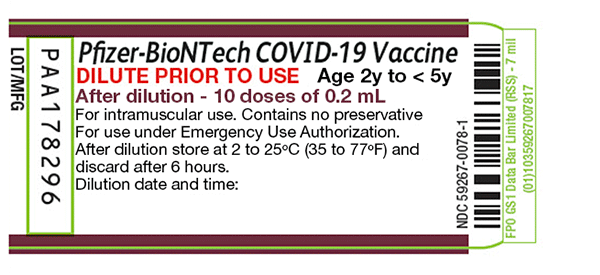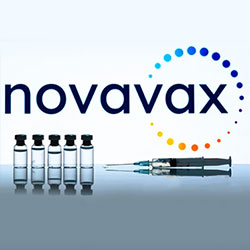By Marie Rosenthal, MS
Discrepancies on the packaging for both of the COVID-19 messenger RNA (mRNA) vaccines to immunize young children could lead to missed opportunities to vaccinate, as well as the waste of expensive vaccine products, according to experts. However, they said the inconsistencies should not be a safety concern.
Getting shots in arms is the primary goal for public health officials, pediatricians, pharmacists and parents in the fight against the COVID-19 pandemic, which is why the two mRNA vaccines by Pfizer-BioNTech and Moderna are now recommended for children as young as 6 months old.
However, the vial label for the Pfizer-BioNTech vaccine meant for this age group and the box label for the Moderna vaccine meant for children 6 to 11 could cause confusion—and actually hinder this vaccination mission.
_______________________________________________________________________________________
2 Pfizer-BioNTech Discrepancies
The Pfizer-BioNTech vaccine label has two discrepancies.
The first concerns the age of vaccination. The label says the vaccine should be used for children “2y to <5 y,” when it should, in fact, be used for children as young as 6 months old.

What could happen, according to experts, is that clinicians will see that label, believe they have the incorrect product and send the child home without being vaccinated. Parents would have to bring their infants and toddlers back. Many might not.
“I [fear that] people are going to pick up the vial that says it’s for a 2-year through 5-year-old, and they are just going to think, ‘This is not appropriate for a 12-month-old or an 18-month-old, or a 6-month-old.’ They are going to [assume] they got the wrong [vaccine]. It is going to delay vaccination, and it is going to inconvenience people,” said Michael Cohen, RPh, MS, ScD (hon.), DPS (hon.), the founder and president emeritus of the Institute for Safe Medication Practices.
“Since the dosing is the same for 6 months to under 5 years [as it is for those 5 years and older], thankfully, we shouldn’t run into errors; however, vaccine waste is definitely an issue,” said Buddy Creech, MD, MPH, the Edie Carell Johnson Chair and a professor of pediatrics in the Division of Pediatric Infectious Diseases at Vanderbilt University School of Medicine, in Nashville, Tenn. “I can see clinics following the label, drawing up vaccine at 8 a.m. and discarding by 2 p.m. since that is what the label says.”
Dr. Creech highlighted the second label discrepancy.
The label says the vaccine should be discarded after six hours, when it actually can be discarded after 12 hours.
This could be a very expensive error. Although patients are not paying for vaccines or their administration, the government has spent hundreds of billions of dollars to develop, purchase and administer COVID-19 vaccines, according to a March 29, 2021, congressional report. (As an example, a June 29 announcement by Pfizer said it signed a new vaccine supply agreement with the U.S. government that includes 3-mcg doses valued at $3.2 billion.)
“The labeled six-hour in-use time may lead to waste,” said Michael Ganio, PharmD, MS, the senior director of Pharmacy Practice and Quality at ASHP. “Initially, sites should have no problem using the 10 doses [in each vial] in six hours, but as interest in vaccinating this age group declines, there will be wasted vaccine, even if a 12-hour in-use time is followed.”
Moderna Discrepancy
Moderna’s inconsistency occurs on the purple box for children 6 to 11 years old. The pink box for those 6 months to 5 years is correctly labeled, Moderna said in an email.

The box label says the bottle contains “booster” doses, rather than telling clinicians it should be used for the primary series in children 6 to 11 years.
This could lead to someone believing they have the wrong product and not providing people with vaccination, according to Mr. Cohen.
____________________________________________________________________________________________________
Missed Opportunities and Waste
“These discrepancies really bother me,” said Mr. Cohen, who has dedicated his life to helping people avoid making errors in the healthcare system. “They [clinicians] are going to think they have the wrong thing, so it is going to delay; it is going to inconvenience people,” he said.
Luckily, experts told a reporter from Infectious Disease Special Edition and Pharmacy Practice News that the labeling isn’t likely to cause an administration error or safety issue, but it is likely to lead to missed opportunities to vaccinate and waste.
“We would not expect the labeling to cause an administration error, since no other vaccine can be used for children under 2 years old, Dr. Ganio said.
“However, it may lead to confusion and possibly delay vaccination. Age-related vaccine mix-ups have been the most common vaccination errors, so it will be important for vaccinators to be aware of this discrepancy,” he added.
“There is no doubt that labeling is very important,” said Jason G. Newland, MD, MEd, a professor of pediatrics at Washington University in St. Louis. “Obviously this label will result in [vaccine] not being used for all ages because many people are not going to be up to date [about the discrepancies] and will result in wasting doses. I hope this label is being corrected as soon as possible.”
However, it does not appear as if the label is being corrected—at least not immediately, according to the CDC, which said it was also concerned about the discrepancies. However, Pfizer said the correct label will appear on vials manufactured after the EUA was granted for this age group.
“CDC does have concerns this mislabeled product may cause confusion, and is working diligently to communicate information about the label to vaccine providers to avoid and correct any confusion,” said Elisha Hall, PhD, the clinical guidelines lead at CDC, who highlighted the label information at a recent Advisory Committee on Immunization Practices (ACIP) meeting.
At that meeting, ACIP member Sarah S. Long, MD, a professor of pediatrics at Drexel University College of Medicine, in Philadelphia, suggested the company print new labels with an adhesive back that could be placed over the incorrect information, but there was no indication that that would be done.
Among the steps taken, according to Dr. Hall, the CDC has:
- highlighted the discrepancies on multiple webinars and calls that have been “highly attended,” and distributed written information to attendees;
- posted its Interim Clinical Considerations for Use of COVID-19 Vaccines, which includes information about the label error; and
- provided printable products that include a storge and handling label with the correct age and beyond-use time that can be put on the vaccine carton, as well as a printable infographic providers can hang in their designated vaccine preparation area to reminder vaccinators about the label discrepancy.
The FDA, which did not respond to multiple requests for comment, also has provided information about this label discrepancy on the first page of the emergency use authorization (EUA) fact sheet for healthcare providers in bold print.
Mr. Cohen said the Pfizer-BioNTech label for 2-year-olds has been available and discussed since December 2021, so he is unsure why that label is being used. “I never thought the 2-year label would be used as a label for those vials [for 6-month-olds].”
Dr. Creech said good communication, such as the CDC is doing, as well as training should improve the situation and ensure that children are vaccinated. “Realistically, I think these are preventable issues.”
However, both Drs. Newland and Long said the complicated logistics involved in getting a vaccine from the manufacturer to the physician’s office, pharmacy or vaccination center into a patient’s arm could be a hindrance to any type of communication.
“It is a challenge to reach every practice/other site where vaccinations may be given,” said Dr. Long, who added that she has received several missives from the producers to be aware of these issues.
EUA Versus Approval
The FDA would never have let these types of packaging inconsistencies fly with an approved product, according to Mr. Cohen.
“Absolutely, for an approved product, this would never be allowed,” he said, “but the product is not an FDA-approved product; it is an EUA product.”
The likely explanation is that the country is still waging war against the pandemic and vaccination is a key weapon in that war, and many people already have doses of the vaccine in their facilities, while other vials are sitting in warehouses waiting to be distributed.
Printing new labels would take time, Pfizer explained in an email.
“In order to ensure rapid access to the Pfizer-BioNTech COVID-19 vaccine for ages 6 months to less than 5 years as soon as possible following the FDA granting an Emergency Use Authorization, the companies manufactured and labelled doses at-risk—as has been the case with all previous formulations of the vaccine,” Pfizer said in the email. “Given the at-risk manufacturing, labels on the doses initially shipped after the EUA may not reflect the final age group authorized by the FDA or the final authorized storage conditions. Healthcare professionals should be assured that these doses meet all the appropriate standards and authorizations. The updated labels have been applied to all doses manufactured since the EUA was granted.”
Mr. Cohen said throughout the pandemic, information about the EUA products has changed, and the FDA has updated fact sheets and sent announcements highlighting the changes. This happened repeatedly for the monoclonal antibodies as their efficacy changed against different variants.
“So, changes in some of the information is not unusual, but I have not seen a label discrepancy like this before,” Mr. Cohen said.
The article will be updated if more information becomes available.




